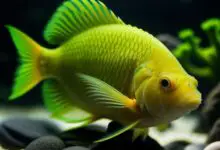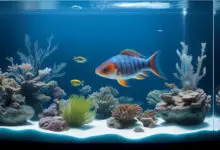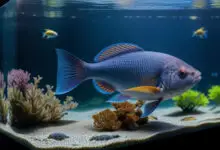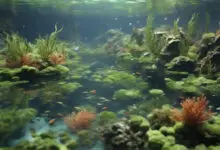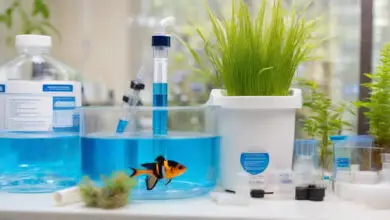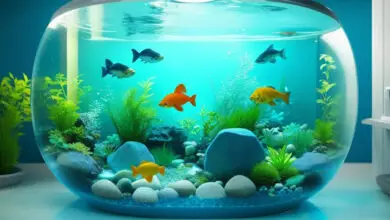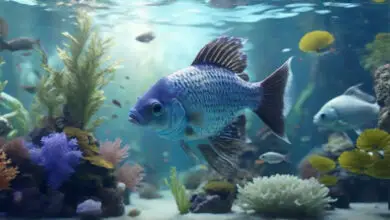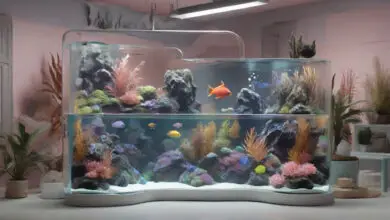Advanced Techniques Of Acclimating New Fish
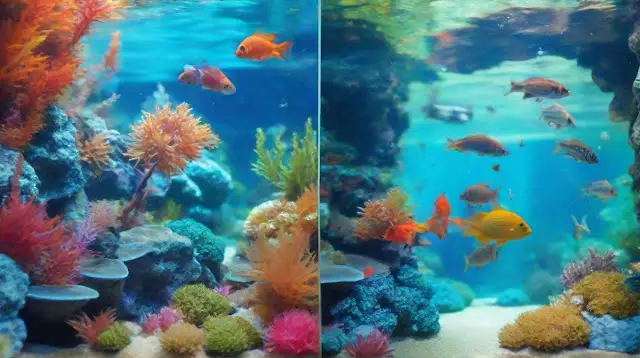
Adding new fish is an exciting part of the aquarium hobby. However, introducing fish to a new tank can be stressful on their health. Going from one water environment to another with differences in chemistry, temperature and bacteria often causes sickness and death if not done properly. By acclimating fish gradually, hobbyists give new tank mates the best chance to transition successfully into their habitat.
Why Acclimating Fish Is Very Important
New fish need time to adjust to the different water conditions in an aquarium. Rushing the transfer from store to home tank can overwhelm their senses and defences. Stress weakens fish making them prone to health issues like:
- Shock
- Failed gill function
- Osmotic imbalance
- Cellophane skin disease
- Fungus infection
- Ich outbreak
- Fin rot
- Strange behavior
- Death
Giving fish several hours to acclimate upon arrival avoids unnecessary disease and fatalities. Patience pays off allowing fish to destress and rebuild protective slime coats.
Key Differences Between Store & Home Water
The types of differences new fish must adapt to between pet store and home aquarium water include:
Temperature – If tank water is significantly warmer or cooler than store water, fish experience thermal shock. Gradual temperature adjustments prevent this.
pH Levels – Different pH levels change acidity affecting ammonia toxicity. Quick pH shifts disturb oxygen and salt intake harming freshwater and marine species alike.
Water Hardness – Sudden changes in mineral concentrations and water hardness create osmotic pressure issues for delicate fish.
Nitrates & Metabolites – Old tank water contains higher nitrates and trace metabolites than fresh store water. This can overload kidneys if not acclimated slowly.
Medications & Salts – Quarantine tanks often dose prophylactic treatments. Introduction without acclimation exposes naive fish to irritating chemicals.
Bacteria Populations – Older tanks harbor higher bacteria counts – both good and bad. Too much new bacteria too fast stresses fish immunity.
Advanced Acclimation Techniques
Specialized acclimation methods tailor fish transfers to each species’ needs. Hobbyists utilize different approaches scaling complexity and duration as required.
Simple Drip Acclimation
A basic drip system flows small amounts of new water into the acclimation container over several hours. As tank water integrates with store water, fish gradually experience property changes.
Setup
- Place fish in clear acclimation container with original store water
- Position air stone to gently aerate receiving container
- Establish reliable, adjustable drip flow from tank to acclimation container
- Monitor fish condition continuously
Process
- Drizzle only enough replacement water to double container volume over 6 hours
- Never add more than 15% tank water by volume at one time
- Observe fish behavior and comfort level, slow dripping as needed
- Cease acclimation once fish show normal respiration for over an hour
Advantages
- Allows gradual adjustment to new water parameters
- Easy to set up with common equipment
- Works well for most community aquarium species
Disadvantages
- Requires diligent monitoring for several hours
- Not customizable to exact species requirements
Customized Acclimation Approach
The tailored acclimation method analyzes differences between current and new waters. Hobbyists use test kits checking pH, ammonia, temperature and salt levels. Based on variance, acclimation duration stretches over appropriate phases to incrementally adapt fish.
Preparation
- Test critical water parameters in store bag and aquarium
- Identify degree of difference between environments
- Plan acclimation timeline matching severity of delta
Process
- Phase I – Temperature Match
- Float sealed bag in tank, allow to equalize to matching temps
- Phase II – Water Exchange
- Transfer fish to acclimation container with store water
- Drizzle in small amounts (5-15%) of tank water periodically
- Slow pace for larger chemistry deltas; increase for smaller
- Phase III – Observe & Release
- Monitor fish for at least 1 hour after final water exchange
- Only release once fish show normal, healthy respiration
- Extend observation if any questionable signs
Advantages
- Tailors acclimation duration to fish needs
- Sets appropriate temperature, pH and hardness shifts
Disadvantages
- Requires thorough water testing before and during
- Can take many hours to complete for sensitive species
- Needs close observation for the entire process
Formalin Dip
Formalin diluted in water serves as a disinfecting precursor to acclimation. The dilute formaldehyde solution neutralizes external bacteria and parasites. Once dipped, fish undergo standard supplemental acclimation.
Process
- Fill dip container with sufficient cooler water
- Add 5 mL formalin per gallon water
- Submerge fish for 5-10 minutes
- Transfer fish to acclimation container
- Repeat earlier acclimation steps as normal
Advantages
- Disinfects fish prior to entry
- Removes external bacteria and many parasites
- Well tolerated by most fish
Disadvantages
- Does not treat internal infections
- Longer exposures unsafe
- Some scaleless species sensitive
Quarantine Acclimation
Quarantine systems provide intermediate housing between store and display tank. Time in quarantine allows observation, prophylactic treatment and slower final acclimations.
Quarantine Tank Setup
- Establish 10+ gallon tank with sponge filter & heater
- Use separate nets, siphons & other gear
- Choose substrate, decor facilitating cleaning
Typical Quarantine Period
- First 2 weeks – Acclimate & observe health
- Next 2 weeks – Administer preventative remedies
- Final 2 weeks – Finish treatments & second acclimation
Release to Display
- Only move to main tank once fish show clean health
- Repeat formal acclimation process before final transfer
Advantages
- Intercepts ill fish before entering main tanks
- Allows thorough observation period
- Lets new fish regain strength
Disadvantages
- Requires setting up second tank
- Can take 4-6 weeks per group of fish
- Does not guarantee disease prevention
Acclimating Fish Checklist
Follow this checklist when introducing new fish to ensure proper acclimation every time:
- Check fish vitality & behavior in store prior to bagging
- Note current water temperature in bag during transport home
- Compare key water parameters using test kits
- Plan acclimation process & time needed
- Have appropriately sized isolation container available
- Dim aquarium lighting to reduce additional stress
- Move fish into temporary container minimizing bag water transfer
- Adjust temperature slowly if significant delta
- Begin dripping aquarium water into container
- Exchange 5-15% total volume every 20-60 mins as required
- Monitor fish closely looking for signs of stress:
- Gulping at surface
- Heavy breathing
- Clamped fins
- Loss of color
- Bottom sitting
- Erratic swimming
- Finish when fish show normal behavior for over an hour
- Release fish gently into main tank
Conclusion
Moving into a new living space throws both fish and humans for a loop. Much like adjusting to a new home, acclimating fish when transferring tanks gives them opportunity to get their bearings and decompress. With aquarium hobbyists investing significant money and emotions into livestock, losing fish to poor acclimation just doesn’t make sense. Instead, advance planning and incremental water adjustments ease fish into new environments improving success rates immensely. Adopting the motto “low and slow” serves fish and keepers well long-term.
